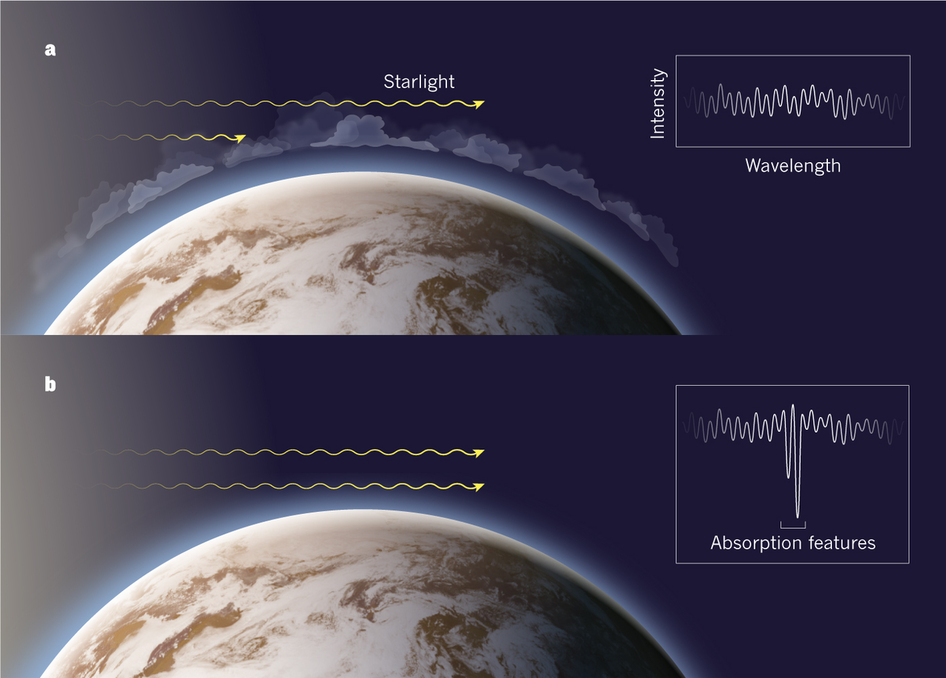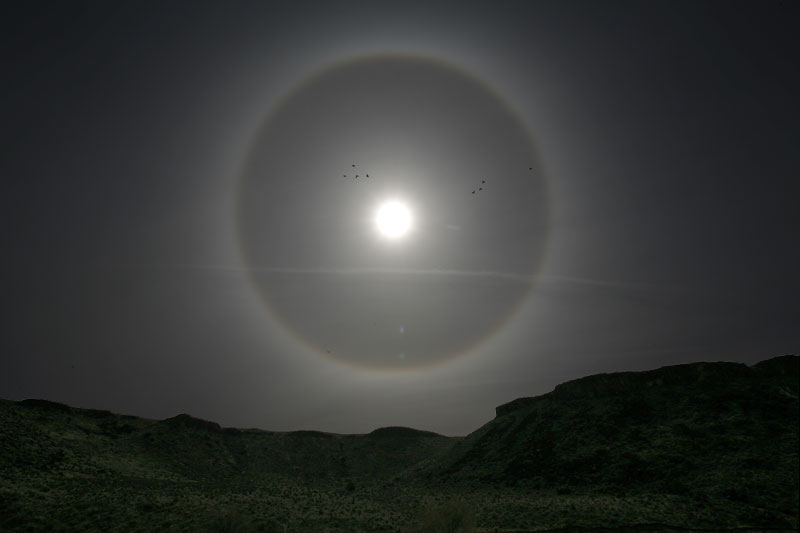New Method Finds Best Exoplanet Candidates for Telescope Time

If life exists on planets beyond our solar system, its presence could be obscured by the haze and clouds in the planet's atmosphere.
Even next generation telescopes — such as the James Webb Space Telescope (JWST) as well as ground-based telescopes like the European Extremely Large Telescope (E-ELT) — will have a hard time penetrating such hazy worlds in search of biomarkers. Astronomers Amit Misra and Victoria Meadows of the University of Washington have developed a new technique to check if a planet has clear skies, which will make it easier for astrobiologists to target the most promising exoplanet candidates for life.
Their research has been published in the Astrophysical Journal Letters and was funded by the NASA Astrobiology Institute element of the Astrobiology Program at NASA. [The 6 Most Likely Places to Find Alien Life]
Hazy worlds
As a planet transits a star, light from that star passes through the planet's atmosphere and certain molecules in the planet's atmosphere absorb the light, enabling astronomers to measure the composition of the atmosphere. This technique is known as transit transmission spectroscopy, and extending this to Earth-like planets is quite a challenge.
The height of the atmosphere of a potentially habitable planet is minuscule compared to that of a gas giant or icy planet close to its host star, so catching the light of the star as it passes through the atmosphere of an Earth-like planet will require extremely lengthy observations. For example, JWST would require around 200 hours to detect the spectrum, while the E-ELT would need at least 20 hours. Even with extensive observations, it is possible that the spectrum would reveal nothing if all the atmospheric features were masked by clouds or haze.
"We've seen a couple of cases already in which observers have spent substantial telescope time on a single target only to get a flat, featureless spectrum,” says Misra. “Telescope time is valuable, so it would be useful to know which exoplanets to spend hundreds of hours on beforehand."

Get the Space.com Newsletter
Breaking space news, the latest updates on rocket launches, skywatching events and more!
Planets with halos
Misra and Meadows have thought of a solution to this problem. On Earth, light can be refracted by ice crystals in the atmosphere resulting in a halo around the sun or moon. The same principle can be applied to exoplanets, as the starlight being refracted in the planet's atmosphere can create a halo around the planet.
Transiting exoplanets are revealed through a regular dip in light from the star. The refraction halo amplifies the light a little so that it can be seen as a bump in the light curve.
"We can see the effect in the light curve prior to and after the transit itself, and you don't need transit transmission spectroscopy, you could just measure brightness," explains Meadows.
A planet covered in clouds or haze would not refract light easily, as the atmospheric layer where the refraction occurs would be murky and block the light. Therefore, if refraction was detected, it would imply that the planet has a clear atmosphere and is an excellent target for follow up spectroscopy.
The scientists used computer models to predict the strength of the refractive signal that would be detected for different types of planetary atmospheres. They simulated solar system planet atmospheres, as well as super-Earths and mini-Neptunes, while also taking into account the distance of the planet from the star, as this will affect the angle of deflection of the light.
Their results showed that planets akin to Saturn would have the highest signal, as they are large in size. They also have the advantage of having a lower surface gravity than the higher mass Jupiter planets, meaning that the atmosphere is quite extended. For both Jupiter and Saturn analogue planets, JWST could detect a refracted light signal in less than ten hours. E-ELT could detect signals from super-Earths and mini-Neptunes in the same amount of time. In contrast, a hazy planet would need more than 100 hours of E-ELT time before the refraction signal could be distinguished.
Earth-like atmospheres
E-ELT has the potential to detect habitable exoplanets with clear skies. Of course this does not mean that no clouds are present at all, as clouds on Earth are essential for the water cycle.
"Earth's water clouds are typically close to the surface, and while they can reduce the detectability of molecular absorption features in transit transmission, work that I and others have done has shown that it should still be possible to detect features from gases like carbon dioxide, water, and possibly even oxygen for a cloudy, Earth-like planet," says Misra.
This new work is an important step forward towards characterizing atmospheres of Earth-like planets. By only needing a few hours of E-ELT time to see if a planet has an atmosphere worthy of follow up, the longer observations can then be used to acquire the spectra that are vital in the search for life.
This story was provided by Astrobiology Magazine, a web-based publication sponsored by the NASA astrobiology program. Follow us @Spacedotcom, Facebook and Google+. Original article on Space.com.
Join our Space Forums to keep talking space on the latest missions, night sky and more! And if you have a news tip, correction or comment, let us know at: community@space.com.
Amanda Doyle is a freelance science writer who studied astrophysics at Keele University in the United Kingdom, earning a Ph.D. for her studies into the spectral analysis of solar-like stars. Her work as appeared in All About Space Magazine, BBC Sky At Night and Astronomy Now. She is a former editor of Popular Astronomy and has served as Deputy Transport Editor at Chemical Watch news & events by Enhesa.










